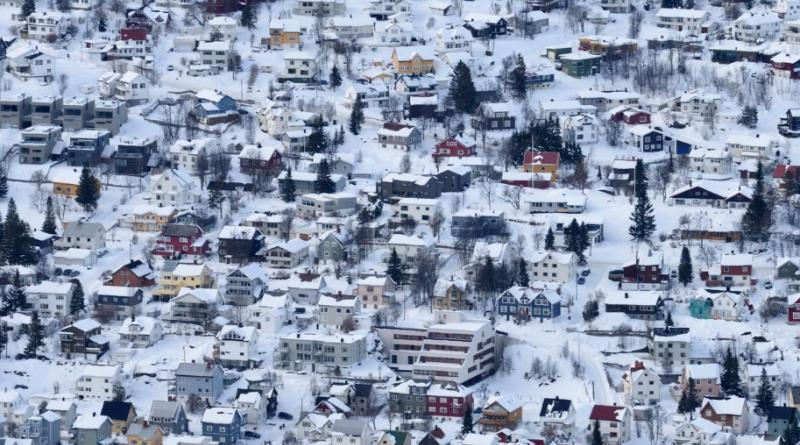‘You can walk around in a T-shirt’: how Norway brought heat pumps in from the cold

When Glen Peters bought a heat pump for his home in Oslo he wasn’t thinking about the carbon it would avoid. Convenience played a role; a fireplace was too much of a hassle – the effort of having to buy, prepare and store the wood – and the wall-mounted radiators are too dusty. “They’re a pain in the ass to clean,” said Peters (who is actually a climate scientist).
But the main factor, according to Peters, who had recently swapped to underfloor heating, was money.
In most of Europe, fitting a heat pump is one of the most powerful actions a person can take to reduce their carbon footprint. But in Norway, where clean-yet-inefficient electrical resistance heaters have long been common, upgrading to a heat pump is often a purely financial decision – one to which Peters came late. Two-thirds of households in this Nordic country of 5 million people have a heat pump, more than anywhere else in the world.
For many years, Norwegians and their neighbours heated their homes with fossil fuels. But during the 1973 oil crisis, when prices shot up, the country’s political leaders made a conscious choice to promote alternatives, and, unlike their counterparts elsewhere, they did not back away from that decision once the crisis eased.
Denmark rolled out an extensive district heating system. Norway, Sweden and Finland moved more towards heating with wood or electricity. They began to price carbon in the 1990s, and a mix of grants and taxes tipped the balance further away from oil long after the crisis was over.
“Norway ensured early on that fossil-fuel heating was the most expensive option, making heat pumps cost competitive,” said Dr Jan Rosenow from the Regulatory Assistance Project, a thinktank that works to decarbonise buildings. “They did this by taxing carbon emissions from fossil heating fuels. That’s been the key to incentivise heat pump adoption.”
Norway also trained up a workforce to install them. While the devices themselves can be churned out of factories en masse, fitting them into homes can be fiddly and easy to mess up. In much of Europe, experts say, the lack of a skilled workforce is one of several bottlenecks holding the heat pump industry back.
“The reason we have big growth is that it works,” said Rolf Iver Mytting Hagemoen, head of lobby group the Norwegian Heat Pump Association. “If you have lots of customers who have complaints and bad experiences with heat pumps, they will tell all their neighbours it doesn’t work.”
There are signs that the opposite also holds true. Ole Øystein Haugen, a retired metalworker who lives just outside Oslo, convinced three of his neighbours to get ground-source heat pumps after he got one himself seven years ago. The device heats his swimming pool as well as his home. It takes a little longer to heat the water in the spring than with the old oil burner, said Haugen, but “that’s the only negative thing”.
At its core, a heat pump is just like a fridge or an air-conditioner. The machine does not generate the desired heat itself but instead moves it from outside to where it is needed. They have been around for decades, with the first heat pump built in 1856 by Peter von Rittinger, an Austrian scientist, and used to dry out salt in a marsh. By the 1930s, the Swiss used them to take heat from rivers and lakes and a couple of decades later the Americans used them to draw heat out of the ground.
Heat pumps’ efficiency has been increased over decades, partly because of the early adopters in Nordic countries who tinkered away to the point where a modern version can deliver three to five units of heat for every unit of electricity used to power it. An efficient gas boiler, on the other hand, can only produce as much heat as the energy contained in the fuel being burned. In other words, a heat pump will have a smaller carbon footprint than a gas boiler even when plugged into an electricity grid dependent on high-emitting suppliers.
Kent Eilertsen is a maintenance engineer at the Norwegian postal service Posten Bring and looks after two heat pumps in a sorting terminal in Tromsø, 137 miles (220km) north of the Arctic Circle. “It works very well in the cold,” said Eilertsen. The devices can become less efficient when temperatures drop below -15C, he added, but new versions still run at -20C or -25C.
That is not what we hear in other countries. Coming from the UK, which sold fewer heat pumps last year than anywhere else in Europe, and living in Germany, where the unassuming grey boxes have become unlikely fodder in a fierce culture war, I find the Nordic acceptance of clean heat particularly hard to wrap my head around. Powerful campaigns against heat pumps have been run in parts of the UK and German press, which continue to argue that the devices are inefficient and break down in cold weather. Some of the campaigning has been linked to gas lobby groups.
The popularity of heat pumps across Nordic countries should be enough to dispel that myth – Sweden and Finland join Norway at the top of rankings of heat pumps per 1,000 household. Studies show the same thing. In mildly cold climates, a standard air-source heat pump produces two to three times as much useful heat as the energy needed to run it, and the ratio only drops below two in temperatures far below freezing.
The Norwegians also benefit from well-insulated houses. “When I was a kid we either sweated like pigs in summer or froze to death in winter,” said Peters, who grew up in Australia. “Norway is very different and quite luxurious in the sense that in the middle of winter you can just walk around in your T-shirt and it’s 20- plus degrees in your house.”
For now, heat pumps are still, in most countries, pretty small scale. The global stock meets only about 10% of the heat used in buildings, according to the International Energy Agency, and their needs to almost triple by the end of the decade to be on track for net zero emissions by 2050. Despite a boom since the recent energy crisis, when fossil gas prices soared, sales in parts of Europe and elsewhere suggest that goal is still well off-track.
Norway’s success is not easy for countries to replicate. It is one of the wealthiest on the planet, so citizens can more easily afford the higher upfront cost of a heat pump. Norway also makes cheap, renewable electricity from hydropower dams, which lowers the monthly bills for people running a heat pump.
But with European governments continuing to subsidise fossil fuels – and setting carbon prices well below the cost of polluting – the Nordic experience shows that politicians in much warmer countries could opt to clean up their heating systems.
-
This article was corrected on November 23 2023 to clarify details about Rolf Iver Mytting Hagemoen’s name and organisation.
Photo: NurPhoto/Gettyimages





